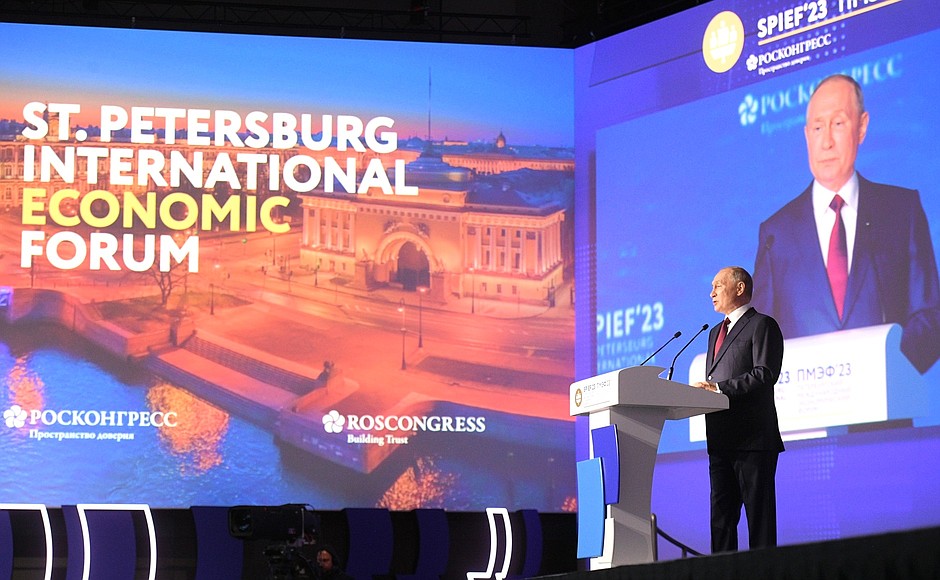Can You Sanctions-Proof a Government?

Published by The Lawfare Institute
in Cooperation With

Editor’s Note: Sanctions are an important U.S. and allied policy instrument, but one that often fails to achieve the most ambitious policy objectives. Using Russia as an example, MIT’s Caileigh Glenn assesses the different ways that targets of sanctions can push back and examines the limits of sanctions and how they might be made more effective.
Daniel Byman
***
The United States, the European Union, and other states lean heavily on financial and economic sanctions to shape the behavior of various adversaries and human rights violators. Governments whose citizens are designated for sanctions, therefore, have incentives to implement sanctions safeguards.
The Russian government evaluated its defenses against U.S. sanctions and took steps to sanctions-proof itself both before and after its invasion of Ukraine in February 2022. In a recent article for the Washington Quarterly, I define sanctions-proofing as “actions designed to insulate a government from the constraints of sanctions … to limit both the exposure of the government to sanctions and the influence of sanctions on government decision-making.” Despite the Russian government’s efforts, the unprecedented sanctions imposed on Russia in February 2022 have constrained the Russian government’s access to necessary Western resources. The government’s sanctions-proofing success appears mixed at best. This is because the influence of the U.S. dollar on international markets, the reach of multilateral sanctions, and the speed with which the United States and its allies imposed coordinated sanctions challenged the strategies implemented by the Russian government to sanctions-proof itself.
In 2014, after the invasion of Crimea, the United States, the European Union, Canada, Japan, and Australia imposed targeted financial sanctions on actors working with the Russian government in Crimea. Eight years later, after the invasion, these countries and the United Kingdom imposed financial and trade sanctions targeting firms in key sectors of Russia’s economy and Russia’s foreign currency reserves. The United States continues to impose secondary sanctions—sanctions on actors in third-party countries who are alleged to have aided sanctioned actors in Russia—as a means of supporting the primary sanctions on Russian firms and individuals.
Russia pursued four sanctions-proofing strategies in the years between its annexation of Crimea in 2014 and its full-scale invasion of Ukraine in 2022. The government (a) implemented a “Russification” policy to protect potential sanctions targets, (b) sought new economic and political partnerships, (c) retaliated against the countries imposing sanctions, and (d) attempted de-dollarization.
Other states could adopt the same sanctions-proofing playbook. These strategies are not unique to Russia. Other states whose citizens and firms are at risk of sanctions have incentives to engage in sanctions-proofing. But assessing Russia’s sanctions-proofing strategies reveals that success in that endeavor is difficult to achieve. Though many of Russia’s efforts to mitigate the influence of sanctions have been undermined by the scale and scope of the sanctions regime, its reliance on partnerships with non-sanctioning countries has emerged as a worthwhile strategy that other states facing sanctions may emulate.
Four Sanctions-Proofing Strategies
One sanctions-proofing strategy is to protect the potential targets of sanctions. Sanctions target individual citizens and firms; therefore, protection can be narrowed to specific companies or broadened to include whole sectors of the economy. The Russian government implemented individual and wholesale protection soon after its annexation of Crimea. As a broad form of protection, the Kremlin pursued Russification, promoting the domestic substitution of foreign manufacturing inputs. As a finer-grained form of protection, the Russian government also created a tax-free zone on Russky Island as a safe haven for wealthy Russians to hold their investments.
All states have comparable protection measures at their disposal. Governments can direct funds toward sanctions targets and implement industry-wide protectionism in vulnerable sectors of the economy. China’s “Made in China 2025” initiative, for instance, while not driven primarily by a sanctions-proofing goal, could serve a similar function as the Russification strategy: reducing reliance on foreign inputs and shielding economic vulnerabilities that may be exploited by Western sanctions.
A second sanctions-proofing strategy involves creating and strengthening economic and political partnerships with governments unlikely to join a sanctions regime. The Russian government pursued such opportunities in Africa by creating the 2019 Russia-Africa Summit. These partnerships can buffer sanctions constraints by providing alternate sources of trade and can be used to conduct sanctions-evading transactions. For instance, Russia is leaning on Kazakhstan for importing microchips and is also repurposing older, lower-tech, and potentially less precise equipment it can find domestically. Russia adapted its strategy after it invaded Ukraine by turning to states such as the Central African Republic and Zimbabwe, whose citizens also face Western sanctions, in a “coordination of convenience.”
A third strategy is retaliation: sending the message that imposing sanctions has consequences. This retaliation attempts to deter states from imposing sanctions by demonstrating the costs of countermeasures by the sanctioned state. In addition, retaliation can be a means of dissuading broader third-party compliance with sanctions by indicating that the sanctions are contested. The Russian government retaliated in various ways to the imposition of sanctions following its annexation of Crimea: for example, enacting counter-sanctions targeting agricultural and consumer goods products, canceling meetings between Russian and U.S. officials, and adding Americans to its travel ban list.
A fourth sanctions-proofing strategy is de-dollarization: reducing reliance on the U.S. dollar to limit the risk of transaction constraints via U.S. sanctions. The Russian Central Bank, as one way of de-dollarizing, reduced its dollar reserves in favor of holding reserves in Japanese yen, Chinese renminbi, and euros. However, the multilateral scope of the West’s sanctions have meant that a large share of Russia’s reserves still remain vulnerable because Japan and the European Union froze yen- and euro-denominated reserves. Other states have also tried to limit their reliance on the dollar to mitigate the damage from sanctions. For example, Venezuela also pursued efforts to reduce its use of the U.S. dollar when it created the petromoneda, an oil reserve-backed digital currency designed to enable transactions without exposure to U.S. sanctions.
De-dollarization did not shield the Russian government from sanctions involving the euro and yen, and retaliation did not succeed in deterring would-be sanctioners. But Russia has been able to demonstrate a replicable sanctions-proofing tactic by adapting its partnership strategy via “coordination of convenience” with other sanctioned states to sustain its war effort.
Challenges for Prospective Sanctions-Proofers
These four sanctions-proofing strategies are not Russia’s alone. Other states at risk of U.S. and EU sanctions can implement the same sanctions-proofing strategies—and are doing so—with modifications to suit their vulnerabilities. Like Russia, they will face difficulties in insulating their governments from sanctions. The features of the wartime sanctions against Russia that make successful sanctions-proofing difficult—swift, multilaterally coordinated sanctions that leverage the U.S. dollar—also make sanctions-proofing difficult in other countries and contexts.
However, the fact that Russia was the invading force, and the months of warning beforehand that enabled policy preparation, made rapid U.S. and EU action in the face of the invasion easier and likely bolstered third-party willingness to eschew status-quo financial relations in support of sanctions. The ability to garner this same degree of multilateral buy-in and compliance with U.S.-led sanctions in the future likely depends on the context of the offending actor’s transgression. Had Russia pursued a less overt intervention in 2022, akin to its annexation of Crimea, much greater diplomatic effort might have been needed to successfully convince other states to join the sanctions coalition. Other states whose foreign policy goals run counter to stated U.S. and EU aims and who anticipate sanctions may consider more covert actions to avoid the penalties that Russia has paid. Russia’s ability to mitigate some of the constraints of sanctions also holds lessons for the United States, European Union, and its partners. When countries still take overt actions, policymakers should also use other policy tools in addition to sanctions, given their limits and these strategies to suppress their effects.
Adapting partnerships (for example, the “coordination of convenience” approach) can aid sanctions-proofing. The degree to which sanctioned states manage to corral partners may make a difference in their ability to withstand sanctions. Imposing secondary sanctions in third-party countries to pressure compliance with Western sanctions is only one blunt tool that may not surmount these adapted partnerships. Accordingly, U.S. policymakers are applying a combination of secondary sanctions and positive inducements—including financial and political benefits—in third-party countries with ties to Russia, which may be better suited to incentivizing sanctions participation. Sanctioned states can adapt to the constraints of sanctions by creating partnerships, but the reach of the U.S. dollar and of multilateral sanctions coalitions makes complete sanctions-proofing nearly impossible.




